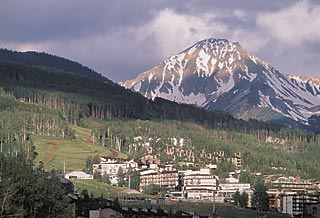2012 Summer Workshop
GEM will be holding its annual summer workshop June 17-22, 2012 at the Snowmass Conference Center in Snowmass, Colorado. Logistical information and workshop agenda can be found at the GEM Workshop Web Site.
Below are the calls for presentations by active GEM focus groups. Please note that in all e-mail addresses below the symbol @ is replaced by " [at] ".
Magnetosheath Studies
Conveners: Steven Petrinec <steve.petrinec [at] gmail.com> and Katariina Nykyri <nykyrik [at] erau.edu>
The Magnetosheath Focus Group will hold three sessions at the 2012 GEM Summer Workshop in Snowmass, CO (6/18; 10:30–12:15 & 13:30–15:00, and 6/19; 10:30-12:15). We cordially invite participants to provide short presentations related to any of the magnetosheath focus group topics listed below. We especially encourage data-analysts utilizing in-situ spacecraft measurements from the THEMIS, Cluster and Geotail missions, as well as theoretical modelers, global and local modelers to participate in this session. We also welcome magnetosheath study presentations relevant to other solar system bodies, as they relate to the terrestrial magnetosheath. Please send the title of your presentation to us by June 8th.
The Primary Objectives and Expected Activities of the FG:
1. To produce more comprehensive models of large scale magnetosheath flow and field patterns, and geometry of the magnetosheath region
2. To improve understanding of magnetosheath plasma instabilities and wave particle interactions: Spatial distribution and characteristics
3. To develop a better understanding of the effects on magnetospheric dynamics due to processes occurring in the magnetosheath and due to characteristic magnetosheath properties.
The focus group proposal with specific science questions can be found at http://gem.epss.ucla.edu/mediawiki/pdf/GEM_FG_MSheath_proposal.pdf .
Radiation Belts and Wave Modeling
Conveners: Yuri Shprits <yshprits [at] atmos.ucla.edu>, Scot Elkington, Jacob Bortnik, and Craig Kletzing
The RBW focus group will 6 sessions this year.
We invite members of the community to attend the sessions and participate in discussions on the following topics :
Mon (10:30am-12:15pm) AM 2: RBW 1 -- GEM particle transport challenge (Jacob Bortnik, Craig Kletzing,Scot Elkington and Yuri Shprits)
Mon (1:30pm-3:00pm) PM 1: RBW 2 -- Dynamical modeling of the radiation belts (Preparing Radiation Belt models for RBSP data) (Scot Elkington and Yuri Shprits)
Mon (3:30pm-5:00pm) PM 2: RBW 3 -- Wave-particle interactions (Particle scattering and transport) (Scot Elkington and Yuri Shprits)
Tue (10:30am-12:15pm) AM 2: RBW 4 -- Wave excitation, propagation, and distribution (ULF) (Jacob Bortnik and Craig Kletzing)
Tue (1:30pm-3:00pm) PM 1: RBW 5 -- Wave excitation, propagation, and distribution (VLF/ELF) (Jacob Bortnik and Craig Kletzing)
Wed (10:30am-12:15pm) AM 2: RBW 6 -- GEM wave challenge, overflow (Jacob Bortnik, Craig Kletzing,Scot Elkington and Yuri Shprits)
You can submit the title of your presentation online by following the link below to reserve a time slot during each individual session. We invite potential contributions and encourage to limit presentations to approximately 5 min.
Please submit the title of your presentations by June 5th at
In particular we would like to encourage modelers to participate in the GEM particle modeling challenge. Data for the GEM chellange and rules are given on ViRBO web site at http://virbo.org/RBW#2010_RBW_Challenge.
The Modes of Magnetospheric Response
Conveners: Larry Kepko <larry.kepko [at] nasa.gov> and Bob McPherron <rmcpherr [at] ucla.edu>
The Modes of Magnetospheric Response focus group has as its aim the improvement of knowledge of the physical mechanisms that provide different dynamical modes of response of the magnetotail to the solar wind. These include substorms, steady magnetospheric convection, sawtooth injection events, pseudo breakups, and poleward boundary intensifications. A complete description of the FG and its goals can be found at http://bit.ly/beGmTF
The Modes of Magnetospheric Response focus group will hold two breakout sessions at the upcoming GEM Workshop (June 18-22) in Snowmass, CO. This is the last full year of the focus group, with next year as a wind-down. The breakouts will be loosely focused on the following two topics:
1. "Steady" magnetospheric convection. The last few years has seen much progress in our understanding of how and when the magnetosphere enters into a quasi-steady convective mode. It has also become clear that the level of particle energization and heating depends on the 'steadiness' of the convection. We will spend one breakout attempting to summarize our understanding of SMCs. We seek talks that address any aspect of this mode, including comparisons to other convective modes.
2. Drivers and effects of other convection modes. Examples include sawtooth events, the role of non-linear coupling to the solar wind driver, polar cap saturation, the role of ion outflow, ionospheric effects, and global simulation results.
Please contact Larry Kepko (larry dot kepko at nasa dot gov) or Bob McPherron (rmcpherr at ucla dot edu) for further information, or to be added to the schedule.
